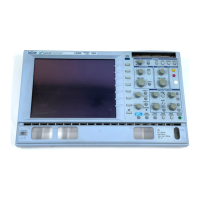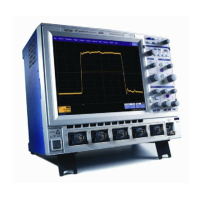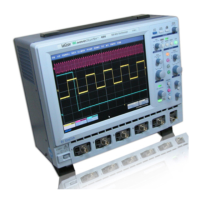424 WM-OM-E Rev I
Resampling ADC
Because the DDA data is already digital, this simply interpolates between DDA samples to produce
a digital value at the channel sample time.
Finite Impulse Response (FIR)
In addition to the continuous time analog filter (CTAF), there is normally an FIR filter following the
analog-to-digital converter at the PRML channel’s sample rate. Its purpose is to ‘adapt’ and
fine-tune equalization. The DDA’s 21-tap FIR has coefficients that can be set using remote
commands. The tap weights can be asymmetric to minimize delay through the filter. Extra delay will
reduce the stability of our control loops for sampling phase and automatic gain control.
If the coefficients as entered sum to > 1 they are renormalized to sum to 1.0; if they sum to < 0.1 as
entered they are rejected. Other than that, there are no restrictions on the tap weights.
In many channel chips, the FIR equalization filter is adaptive. However, the DDA does not change
the values set by the user.
Phase Locked Loop (PLL)
Correct operation of any PRML system also depends on the taking of readback signal samples at
exact "focus" positions. Shifting the clock slightly from the correct position is enough to distort
sample values.
A clock recovery circuit, Phase Locked Loop (PLL), adjusts the phase of the oscillator, based on the
value of the phase error. This is usually done in a feedback circuit.
The phase-error function is calculated in the phase detector circuit and is equal to zero in the
correct clock position. When the signal is correct, the error signal is equal to zero, and oscillator
frequency and phase remain in exactly the correct position. If for some reason the phase of the
input signal and that of the oscillator diverge --- owing to instability of disk rotation or noise, for
example --- the phase-error signal deviates from zero, and the frequency of the oscillator shifts.
Two main problems have to be resolved in the clock recovery circuit. One is the initial fast-phase
acquisition: prior to a reading of the pattern, it is necessary to align the clock to the correct position
of the pattern. The other is tracking --- the following of relatively slow instabilities of the disk
rotational speed. In order to avoid fast, noisy phase shifts, and to provide system stability, the
phase-error signal is integrated by an integrator.
